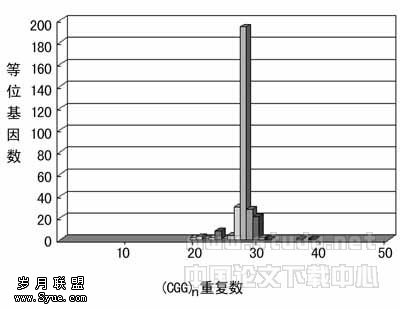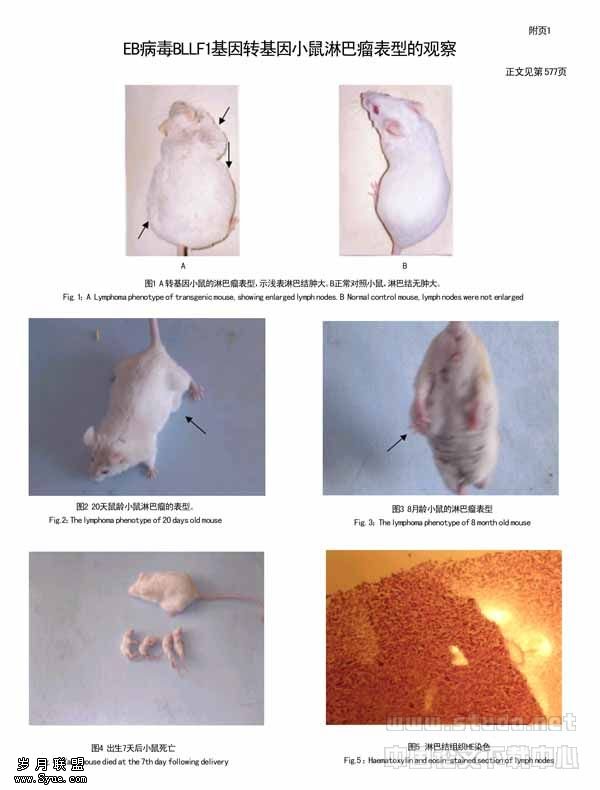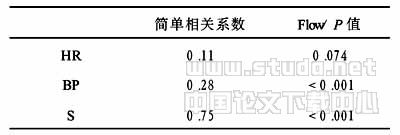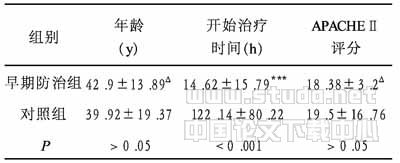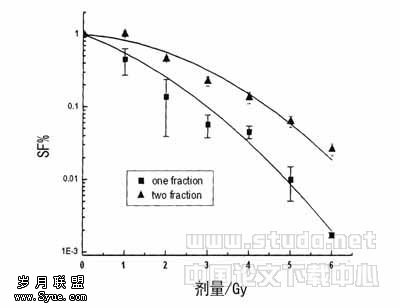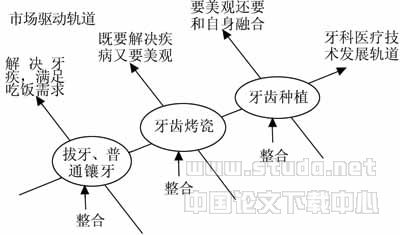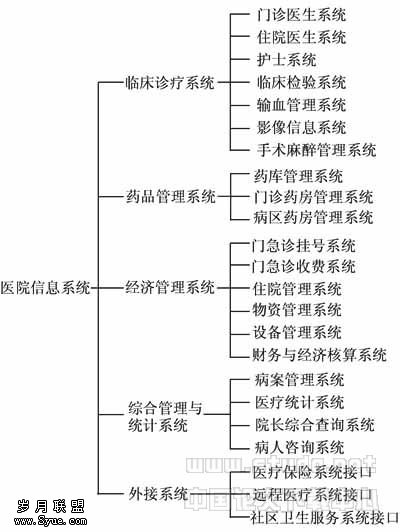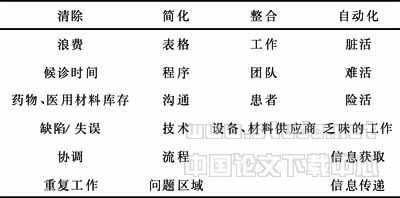急性单核细胞白血病M5a和M5b细胞遗传学与临床表现的比较
【摘要】 为了比较急性单核细胞白血病M5a和M5b细胞遗传学差异,并研究其与临床行为之间的相互关系,采用骨髓直接法和24小时短期培养法制备染色体标本,用G显带技术对58例成人初发急性单核白血病细胞进行核型分析,同时对其临床资料进行回顾性研究。结果表明: 58例患者中正常核型28例,异常核型30例,其中正常核型在M5b中出现率高于M5a(P=0.0001),异常核型中11q23异常和+8染色体在M5a中均较M5b常见(P<0.01); 临床上异常核型的M5患者常有高白细胞(WBC)计数,中枢神经系统浸润,完全缓解(CR)率低及存活期明显缩短的特征。结论:急性单核细胞白血病在遗传和临床上是一组异质性疾病,但M5a和M5b似乎具有各自独特的遗传学背景和临床表现。
【关键词】 急性单核细胞白血病; AML-M5a; AML-M5b; 细胞遗传学
Comparison of Cytogenetics and Clinical Manifestations between M5a and M5b of Acute Monocytic Leukemia
Abstract To compare the cytogenetic difference between M5a and M5b of acute monocytic leukemia and to study the correlation between karyotypes and clinical manifestations,a total of 58 cases of de novo adult AML M5 have been investigated. Chromosome metaphases of bone marrow cells were prepared by using direct method and 24 hours short-term culture. The karyotypes were analyzed by G-banding. Meanwhile,clinical information of these cases were studied retrospectively. The results showed that there were 28 with normal karyotype and 30 with aberrant karyotype in 58 cases. The frequency of normal karyotype in patients with M5b was significantly higher than that in patients with M5a(P=0.0001). The 11q23 aberrations and trisomy 8 were more common in patients with M5a in comparison with patients with M5b(P<0.01). The patients with AML M5 with aberrant karyotype had a higher incidence of hyperleucocytosis,extramedullary central nerve system infiltration,lower complete remission (CR) rate and shorter overall survival. It is concluded that acute monocytic leukemia is a series of heterogeneous diseases,a distinctive cytogenetic features can be observed between patients with AML M5a and M5b,these results will provide insights into the classification and pathogenesis mechanism of AML M5 at molecular level.
Key words acute monocytic leukemia; AML-M5a; AML-M5b; cytogenetics
Acute myeloid leukemia (AML) can be classified by FAB system into different groups based on cellular morphology and cytochemistry staining of bone marrow cells. According to the differentiation stage of monocytic cells,acute monocytic leukemia (AML-M5) consists of two groups: M5a,the percentage of monoblasts is ≥80%; M5b,the majority of monocytic cells are promonocytes (blasts <80%)[1]. In addition,hematological malignancies can be classified as lymphocytic,myeloid,histocytic and mastocytic series based on the origin of malignant cells by the WHO. Each group is determined by morphology,cytogenetics and clinical characteristics. However,these two classification systems cannot be used to differentiate the cytogenetic characteristics and clinical manifestations between patients with M5a and M5b. In the present study,we investigated 58 newly diagnosed AML M5 patients in order to better characterize the cytogenetic changes and clinical manifestations of these patients for more accurate classification and understanding of the pathogene-sis of the disease,which could lead to the development of a novel therapeutic strategy.
Materials and Methods
Patients
During the period from January 2000 to June 2004,58 patients were newly diagnosed with AML M5 in the department of Hematology of Union Hospital affiliated to Tongji Medical College,Huazhong University of Science and Technology (Wuhan). The clinical records and laboratory test reports of these cases were reviewed. The clinical diagnosis was made based on the clinical symptoms,peripheral blood counts,bone marrow examination. 26 out of the 58 patients were classified as M5a and 32 as M5b. There were 12 males and 14 females of AML M5a patients,aged from 18 to 59 with a median age of 39.5,while 20 males and 12 females of AML M5b patients aged between 28 to 66 with a median age of 48.
Cytogenetic analysis
2-3 mls of heparinized bone marrow from patients were cultured in RPMI 1640 supplemented with 20% fetal calf serum and 20 U/ml heparin. The cell density was adjusted to 1×106/ml. The samples were incubated at 37℃ for 24 hours,then treated by colchicines with the final concentration of 0.05 μg/ml for another 42 minutes. Standard cytogenetic preparation was made; a modified chromosome banding technique (G-banding) was used. For chromosome analysis at least 30-50 metaphase chromosomes should be counted in each sample,and 10 metaphase chromosomes were analyzed by microscopy or micro photography. Karyotypes were analyzed according to the International System for Cytogenetic Nomenclature (ISCN. 1995).
Protocols
All patients were treated with regimens as follows: (1)DA (daunorubicin 45 mg/m2 per day by intravenous infusion (iv),day 1 to 3,plus cytarabine 100-200 mg/m2 per day by intramuscular injection (im) day 1 to 7); (2)HA (homoharringtonine 2-3 mg/m2 by iv per day,day 1 to 3,plus cytarabine 100-200 mg/m2 per day by im,day 1 to 7); (3)IA (idarubicin 10 mg/m2 per day by iv,day 1 to 3,plus cytarabine 100-200 mg/m2 per day by im day 1 to 7); (4)MEA (mitoxantrone 8-12 mg/m2 per day,day 1 to 3,plus etoposide 100 mg/m2 per day by iv drip,day 4 to 5,plus cytarabine 100-200 mg/m2 per day by im,day 1 to 5). Subsequently,some patients received strengthening chemotherapy with cytarabine 1.5 g/m2 twice a day for 6 days,while patients older than 70 years received the same therapy for only 3 days. Out of the 58 patients,two underwent human leukocyte antigen-matched allogeneic bone marrow transplantation and one underwent peripheral blood stem cell transplantation after the diseases went into complete remission.
Definition of response
Complete remission was defined in each protocol as absence of leukemia in the bone marrow indicated by less than 5% blasts,recovery of normal peripheral blood cell counts as indicated by absolute neutrophil count≥1.5×109/L,and platelet count≥100×109/L,and absence of extramedullary leukemia.
Statistical analysis
Clinical and cytogenetic characteristics of AML M5a patients were compared with that of AML M5b patients using χ2 test.
Results
Cytogenetic analysis
Out of 58 patients,28 (48.3%) had normal karyotypes,the frequency of which was significantly higher in the patients with AML M5b (85.7%,n=24) than that in the patients with AML M5a (14.3%,n=4)(P<0.01); 30 (51.7%) had aberrant karyotypes being involved in 11q23/MLL(AML M5a vs AML M5b: 83?3% vs 16.7%,P<0.01),sole trisomy 8(AML M5a vs AML M5b: 88.9% vs 11.1%,P<0.01),trisomy 8 plus 11q23/MLL(AML M5a vs AML M5b: 33?3% vs 66.7%) and other chromosome abnormalities,out of which trisomy 21 in two patients,5q-in one,7q-in one,t(9;22) in one,and t(8;16) in another one. The results of cytogenetic analysis for all AML M5 patients are summarized in Table 1.
Clinical characteristics
Out of all the patients,abnormally high white blood cell counts (≥50×109/L) were detected in 27 patients (M5a vs M5b∶ 14 vs 13); hepatosplenomegaly was observed in 22 patients (M5a vs M5b∶11 vs 11); extramedullary disease in the skin was found in 16 patients (M5a vs M5b∶9 vs 7),enlargement of lymph nodes in 20 patients. 15 patients had central nervous system leukemia (M5a vs M5b∶9 vs 6); 14 patients had the disseminated intravascular coagulation (M5a vs M5b∶8 vs6).
The complete remission rate was 42.3% (n=11) for patients with M5a,56.3% (n=18) for patients with M5b,and 50% (n=29) for all AML M5 patients. The percentage of the one-year disease-free survival(DFS)in patients with AML M5a was 26.9% (n=7),while it was 34.4% (n=11) in patients with AML M5b. The clinical characteristics between the two subtypes were not significantly different (P>0.05). These results are listed in Table 2.Table 1. Cytogenetic data for patients with AML M5 subtypes(略)Table 2. Clinical characteristics of AML M5 patients with various karyotypes(略)
Discussion
Specific non-random chromosomal abnormalities are often observed in certain subtypes of hematologic malignancy. More aberrant cytogenetics has been discovered in patients with AML M5 after initially finding of t(9;11) (p21;q23) in M5a patient by Berger[2] in 1980. Haferlach et al[3]considered that 11q23 aberration and trisomy 8 were significantly associated with AML-M5. Tkachuk et al[4] found that 11q23 abnormalities are involved in the MLL gene (or named “ALL1” or “HRX”),spanning 90 kb of cDNA and encoding a 3968-amino acid protein with molecular mass about 430 kD. The wild-type MLL protein has three AT-hook DNA binding domains and multiple zinc finger domains. MLL gene-encoded product as a transcription factor then may bind with the genes regulating body development and cell differentiation[5]. The gene rearrangements of MLL such as 11q23 translocation alter its structure and function and may lead to leukemogenesis.
Meanwhile,the trisomy 8 is a chromosome abnormality. Although the inducing mechanism and the biologic role of the trisomy 8 are unknown,the relationship between the trisomy 8 and monocytic malignancy has been suggested [6]. The occurrence of trisomy 8 may enhance the expression of genes,leading to the development of leukemias. In this study,the incidence of “normal karyotypes” was higher in patients with M5b than that in patients with M5a (P<0.001); the involvement of 11q23 aberrantions and trisomy 8 were detected more frequently in patients with M5a than that with M5b (P<0.01) in accordance with prior studies[3,6]. These results indicate that the genomic instability is more common and complex in M5a patient leukemic cells than that in M5b cells.
The clinical characteristics of patients with AML M5 included extramedullary infiltration with high WBC counts,low complete remission rate and short disease-free survival (DFS). In our study,no significant difference was found regarding those characteristics between the two subtypes,in agreement with the results from the study of the Eastern Cooperative Oncology Group (ECOG) on 81 patients with AML M5[1].
Meantime,Schoch et al[7] analyzed 1 897 AML cases with 11q23 abnormalities,and found that the patients with 11q23 deletion/translocation/inversion were often slightly younger and had high WBC counts,hepatosplenomegaly,central nervous system involvement,low complete remission and short DFS. The clinical data from the Southwest Oncology Group[8] demonstrated that the patients with the trisomy 8 were slightly older,and with lower WBC counts,lower percentages of peripheral blasts,lower complete remission and shorter DFS than those of patients without the trisomy 8. Because of the limited case numbers,the comparison of clinical data among patients with various aberrant karyotypes was not performed in this study,but lower complete remission and shorter DFS were still evident.
In conclusion,the AML M5 patients examined in this study showed a significant heterogeneity in cytogenetics and clinical manifestations. The 11q23 aberrantions and trisomy 8 were more frequently detected in patients with AML M5a,compared with patients with M5b. Most of the patients with AML M5b had a normal karyotype. The patients with aberrant karyotypes had a lower complete remission rate and shorter DFS. These results provide further insights into the pathogenesis of AML M5 and might lead to a better classification of the disease.
Acknowledgements
The authors would like to thank Professor Daohong Zhou in Medical University of South Carolina,USA,for helpful English polishing on the manuscript.
【】
1 Tallman MS,Kim HT,Paietta E,et al. Acute monocytic leukemia (French-American-British classification M5) does not have a worse prognosis than other subtypes of acute myeloid leukemia: a report from the Eastern Cooperative Oncology Group. J Clin Oncol,2004;22: 1276-1286
2 Berger R,Bernheim A,Weh HJ,et al. Cytogenetics studies on acute monocytic leukemia. Leuk Res,1980;4:119-127
3 Haferlach T,Schoch C,Shnittger S,et al. Distinct genetic patterns can be identified in acute monoblastic and acute monocytic leukaemia (FAB AML M5a and M5b): a study of 124 patients. Br J Haematol,2002;118:426-431
4 Tkachuk DC,Kohler S,Clearly ML. Involvement of a homolog of Drosophila trithorax by 11q23 chromosomal translocations in acute leukemias. Cell,1992;71:691-700
5 徐伟来,金洁,陈志妹等. 8号染色体三体38例临床及实验研究. 中华医学遗传学杂志,2003; 20:528-531
6 Anonymous. Morphologic,immmunologic,and cytogenetic (MIC) working classification of the acute myeloid leukemias. Report of the Workshop held in Leuven,Belgium,September 15-17,1986. Se-cond MIC Cooperative Study Group. Cancer Genet Cytogenet,1988; 30:1-15
7 Schoch C,Schnittger S,Klaus M,et al. AML with 11q23/MLL abnormalities as defined by the WHO classification: incidence,partner chromosomes,FAB subtype,age distribution,and prognostic impact in an unselected series of 1897 cytogenetically analyzed AML cases. Blood,2003; 102:2395-2402
8 Wolman SR,Gundacker H,Appelbaum FR,et al. Impact of trisomy 8 (+8) on clinical presentation,treatment response,and survi-val in acute myeloid leukemia: a Southwest Oncology Group study. Blood,2002; 100: 29-35.


